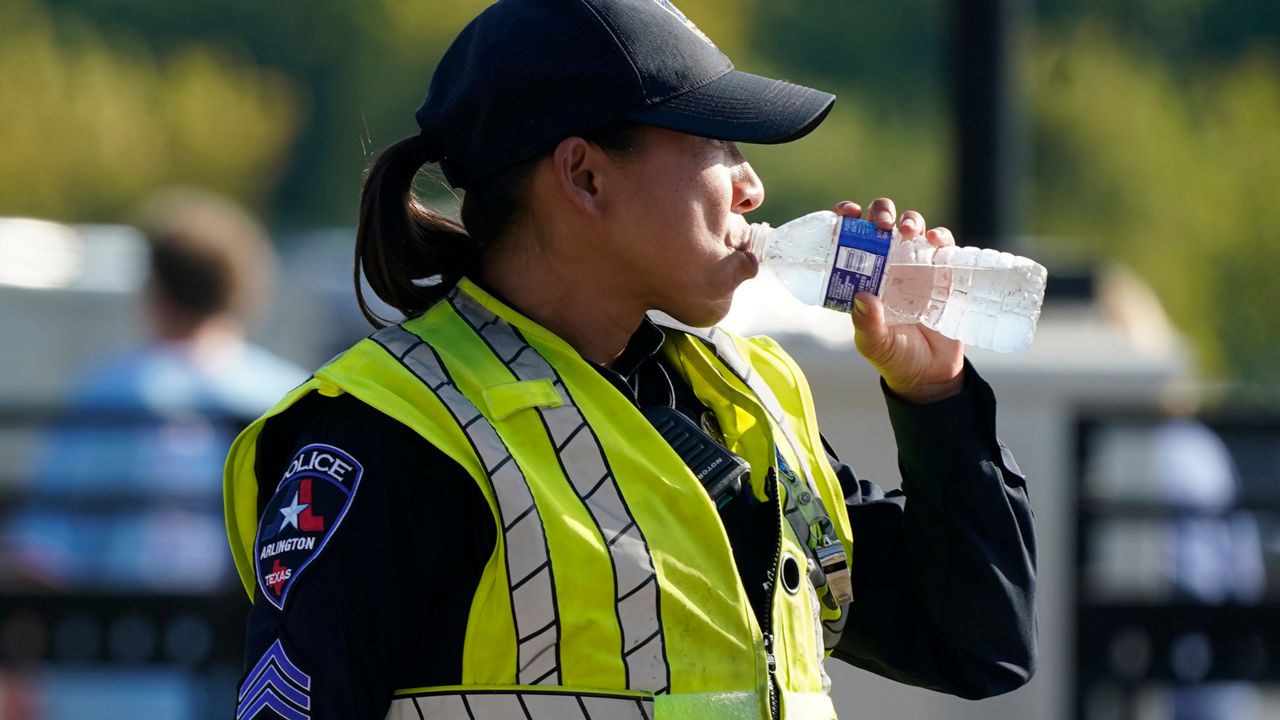TEXAS — Students are shuffling back into college life as campuses move into the fall semester of 2023. But it certainly doesn’t feel like fall, with Texas’ record high temperatures.
The National Weather Service set an excessive heat warning Sunday for parts of Texas.
The stifling heat in Houston overwhelmed people taking part in orientation for new students at Prairie View A&M University. University officials said they were reviewing operations after 38 students were hospitalized Friday night after suffering heat-related illnesses, including dehydration. One student was taken by helicopter to a hospital in nearby College Station, while 37 were taken in ambulances to other facilities, Waller County EMS Chief Rhonda Getschman told KBTX.
“It’s very easy to overheat quickly in this Texas heat. We highly encourage everyone to stay indoors as much as possible,” Getschman said.
But that's hardly doable for busy college students, having to walk to and from classes across the campus. Other universities are back in session as well.
The University of Texas colleges are open for the fall semester. Some students began moving into their dorms and on-campus apartments this weekend.
UT Austin welcomed all Longhorn students back with Sunday’s festivities. Citing safety as their top priority, UTPD offered 24/7 support to students.
Texas State students also go back to classes Monday. They put up a video to help prepare new and returning students to get around the campus while managing the heat safety.
The historic heat began blasting the region in June, stretching from Texas across New Mexico and Arizona and into California’s desert. The previous record was 18 straight days over 100 degrees, set in 1974. In July, the continental United States set a record for overnight warmth, providing little relief from daytime heat for people, animals, plants and the electric grid, meteorologists said.
The Centers for Disease Control and Prevention reports just 600 to 700 heat deaths annually in the United States. But experts say the mishmash of ways that more than 3,000 counties calculate heat deaths means the public doesn’t really know how many people die in the U.S. each year.
The Associated Press contributed to this report.



